When last I added words to this section of this site the story was being interrupted by a situation that I recently have, unfortunately, become all too familiar with—being denied boarding for an air flight for which I held a ticket. As I mentioned before, my destination was to be Ghana, and it’s capital, Accra, and I had been advised by that country’s Embassy in Lomé, Togo, that I would be able to apply for a visa upon arrival at the Accra airport. The gate agents, and the Ghanaian officials that they communicated with, held other opinions, however, and after a lengthy period of discussion, I eventually recognized that a visit to Ghana, whose territory began a mere ten kilometers from where I was standing, would not be a part of the World2 Tour.
Fortunately, I was inherently suspicious about what I was told at the Embassy, since the amount of out-of-date, or simply inaccurate, information floating around these days is truly astounding. Consequently, I had already put forth a considerable effort to identify an alternate destination in the event that those suspicions turned out to be valid. That was not a particularly simple task, as there were several possibilities to consider. I could have moved on to a more distant region, but I had yet to make any serious attempts to observe most of the best birds to be found in that part of the continent, something that I had planned to do in Ghana. Therefore, I needed to spend some more time in one of the neighboring countries and each had its own advantages and disadvantages. Most had immigration polices that were reasonably user friendly but in some of them access to potentially important birding sites seemed problematic. Additionally, both Cotê d’Ivoire and Guinea were, at the time, dealing with the chaos of disputed presidential elections, situations that could easily spiral out of control. As a native of the United States, which always has smooth transfers of power sometimes has leaders who refuse to leave, it seemed like it would be wise to avoid any additional political troubles at that time. In the end, I decided to go to Sierra Leone, a small country that I thought that I would likely enjoy, which possesses a bird list similar to that of Ghana, even though it was slightly farther away, requiring a somewhat longer flight than I might have preferred.
Coincidentally, the same short flight from Lomé to Accra, for which I already held a ticket, was scheduled to subsequently continue from Accra to the capital of Sierra Leone, Freetown. This felt like a rare example of good fortune, though, in a typical manner, nothing is ever quite so simple. I had arrived at the airport extraordinarily early, but, after wasting a considerable amount of time while I and the airline futilely debated the Ghana visa issue and yet more time while they insisted on communicating with Sierra Leone immigration to confirm visa-on-arrival there, even though I showed them information from their government saying that was available, and after paying the additional airfare, and the seventy Dollar bike fee, I finally checked in, just two minutes before the flight was closed. I must admit that when the flight landed in Accra, after only twenty minutes in the air, I was tempted to casually deplane and then try to deal with Ghanaian immigration in person. Of course, no, that would not have been proper, and, more importantly, my checked bag and the bike would still continue on to Freetown. At least they would, in theory.
For, yes, nothing this year goes smoothly. At the Freetown airport, after the reasonably simple process of getting the visa, I grabbed my bag off of the conveyor but soon felt the dread of realizing that the bike was nowhere to be seen. For the second time on this Tour, an airline has failed to load the bike, despite the exorbitant fees I had paid for the privilege, and, overall, the resulting effects here were quite similar to the first occurrence, the previous year, in Guadeloupe. I actually was not particularly surprised this time. At the Lomé airport, with check-in closing, the friendly gate agent summoned a porter and the three of us walked the bike over to the oversized baggage drop. The porter was loudly complaining about something in a language that I didn’t recognize and I soon noticed that there was no one at the baggage counter. The man who worked there had wandered over to the snack bar, and was seemingly uninterested as he slowly made his way back. With boarding imminent, I uneasily left the bike sitting there on the big conveyor, unattended. I usually attempt to look out the terminal window to watch the bags being loaded, to confirm that the bike is there and to see how roughly it is being mistreated. On that occasion, I thought I saw it on the cart, but apparently I was mistaken.
Initially, the inconvenience did not seem intolerable, since there was another flight from Lomé/Accra the following day and I had already decided to spend two nights at a hotel a short distance from the airport. So the next evening I was there waiting for that next flight, which, of course, was delayed by a couple of hours, and, annoyingly, no bike was unloaded from that aircraft as well. Now, I was distinctly displeased. To make matters worse, the third day was a Sunday, and the same flight was not scheduled, with the next possibility on Monday. The place I was staying was surprisingly expensive, so this airline error would cost me dearly. This whole episode was disturbingly reminiscent of the earlier event in Guadeloupe and, in fact, I passed the a fraction of the time on the wasted day the same way in both places, by getting a haircut. On Monday, things began to look up when the bike finally appeared on the luggage carousel.
Sierra Leone‘s entry and covid procedures were fairly typical of the countries I have been to recently. Visa-on-arrival was $US 80.00, and the arrival covid test at the airport was the same cost (the departure test would be slightly less.) Results were sent by e-mail and arrived in forty-eight hours instead of the seventy-two indicated, so I had my negative result before I had the bike. Around the country the typical policies for masking and hand washing were the rule, but here the usage of those procedures were much less prevalent than in any place I had been in months. This may be, in part, due to the fact that Sierra Leone was perhaps the worst affected place during the 2014 Ebola epidemic and, comparatively, covid must seem much less severe to the general population. Additionally, while there have been a certain number of cases throughout West Africa, the total numbers have been relatively low, possibly thanks to fewer initial cases from overseas, or because indoor crowds are less common here. Over the last few months, in multiple countries, I have begun to see outdoor signs extolling safe covid practices that have already faded and peeled due to exposure to the elements, an indication of how long this has been going on. However, occasionally in Sierra Leone I observed other signs, even older and more faded, which said things like: Don’t touch dead bodies to avoid spreading the Ebola virus!
That does tend to give a new perspective to the current pandemic.
Sierra Leone has not become a major destination for tourists, a fact that is always a plus as far as I am concerned, in part because the country suffered terribly during an eleven-year civil war, beginning in 1991. That particular conflict was even more pointless than most, because it was, in effect, a proxy war that had spilled across the border from neighboring Liberia, and was also, inexplicably, excessively cruel and violent. Like all conflict, that episode set the society and the country’s infrastructure back significantly. However, twenty years had now passed and to my limited views there were few visible reminders of those sad events and the towns and countryside now appeared similar to other countries on the continent. That is a testament to the Sierra Leoneans abilities to leave the past behind and move forward.
The original formation of the country shares important aspects of it’s founding with its neighbor, Liberia. The latter was established when the United States resettled a number of freed slaves at that location in the early nineteenth century. The British Empire was concurrently doing the same, transporting settlers with African heritage from its Caribbean possessions, from England itself, and from communities of Africans living in the Canadian Maritimes who had been Loyalists during the Revolution, to the area of what is today the national capital, Freetown. However, as Empires are wont to do, the British eventually reestablished dominion over the entire territory of Sierra Leone, and, just like that, Freetown became notably less Free.
One curious circumstance that I hadn’t even noticed until halfway through my stay was that shortly after its independence was granted, in the 1960s, the country changed its road system from the left-side travel pattern of the Anglosphere, to right-side travel, as used by all of its neighbors. After so much time riding in various places, either way is fine with me, but I can only imagine the weeks of mayhem that must have ensued after that change was made. In general, as far as roads were concerned, I was not really surprised to see that, like most countries in this category, the good roads were very good, while the poor roads were decidedly not, with almost nothing in between. This was likely enhanced by a certain amount of reconstruction that occurred during the two decades since the war ended. I also noticed that the environment seemed to be in somewhat better condition, relative to some other similar countries I have seen, and, of course, I appreciated that. More large trees seemed to be present, especially around villages, and most of the rivers seemed to be relatively clean. Like all countries in this region, the climate is always hot and humid, which was still a drain on my energy levels. The landscape was, once again, verdant, as early November was the end of the rainy season. During my visit I noticed an abrupt change to the following dry season at about the halfway point, with numerous heavy downpours at the start and none during the second half.
Like the previous two countries, stores selling food seemed to be few and far between, with a selection of items that was even more sparse, and this time restaurants also were tough to find. Nevertheless, I managed to keep myself fed without too much trouble. A more bothersome issue involved finances. At some point in the recent past, the country’s currency, the Leone, had inflated, so that now one US Dollar was equivalent to ten thousand Leones. I have toured through a few countries with low-value currencies previously, and usually they print at least a few high-denomination notes, which helps with convenience. However, there the largest bill was only Le 10,000. This might not have been very noteworthy if Sierra Leone had not been surprisingly expensive, relative to other African countries, especially for things like accommodations. Since only a fraction of establishments accept bank cards for payment, one frequently finds themselves paying for an expensive hotel stay using the equivalent of a giant stack of $1 bills.
Technically, I had been to Sierra Leone once before, though I can’t say much about that experience. During the Tour of Gondwana, thirteen years earlier, the cargo ship I used to cross the Atlantic called at the Port of Freetown, but passengers were not allowed to disembark there for security concerns.
I rolled my eyes at that policy at the time, but now, with the bike reassembled, and a huge wad of cash in my bag, I was ready to begin cycling again to correct that error. However, the start was fairly slow. The international airport is actually located twenty kilometers north of Freetown, on the opposite side of a large estuary, requiring a crossing by ferry. That would normally not elicit a comment here, but in this case I was very relieved when I finally got off that boat. The local police were making sure everyone wore a mask when boarding, but the locals immediately removed theirs once on board. That might not have mattered a much, except that, as it departed, this particular vessel was overcrowded to the point of being unsafe. Had I been standing closer to the ramp, I might have abandoned and found another way across, but I was effectively trapped at that point. I declined to remove the mask I had on, which for me was unusual when outdoors, and by the time the ten-minute crossing was complete I felt as if I would soon pass out from the heat and a lack of oxygen. However, the vessel did not capsize, and eventually I was in Freetown, a city with over a million inhabitants. All of the congestion which appeared to be absent in Lomé and Cotonou seems to have been transferred there, so getting through the city was a little more stressful, though at least the architecture in the center did have a little more post-Colonial charm. Not having done any route planning up to that point, I needed to stay in the city that afternoon to take care of that and a few other details. The best route out of the city is actually the coastal road running south, which passes by a handful of ramshackle beach towns and contained relatively light traffic, a situation caused predominantly by a seven-kilometer rough dirt section, where the road curves around a smaller estuary, which has been a construction zone for at least twelve years. I stopped just before that point for the first of my birding breaks, and that, and passing through Freeport in general, both took longer than I had intended.
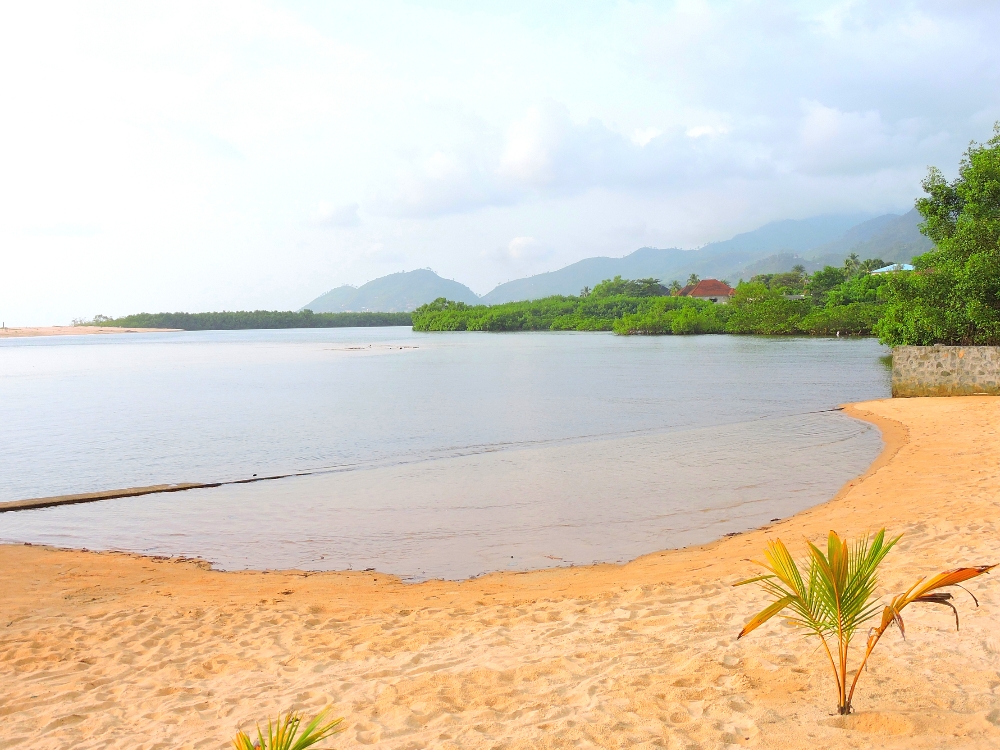
Finally, the real start of this section was set to begin. My first destination was Tiwai Island Wildlife Sanctuary, and I could have reached there in four rather short days. However, it took six, for an added rest day, and another wasted day due to money issues. Another consequence of the low value of the Leone is that managing cash is of prime importance. A small number of ATMs are in the major towns, but with only small notes in use they run out of cash quickly. On the day I started that part of the ride I had only limited funds on hand. There was one ATM on the first day’s route, with no others likely for the next three days. Of course, when I reached that point: Out of Service. The only option was to ride back towards the city for ten kilometers, back into the congestion and uphill, to where the next machine could be found. At that point, I had had enough for the day and stopped there, using up all but the equivalent of four Dollars of my remaining cash. The following day, after checking the first still-non-functional ATM again, and a lengthy search for the second, I finally located it, only to be dismayed to see that it was empty. The only option left was to ride farther back into the city, the wrong direction, to find a hotel that accepted cards and then look for another machine near there. Before doing that I used half of my remaining bills to obtain some cold drinks. It was fortunate that I did that, because after I finished drinking them, and was preparing to depart, a few men from the bank arrived and proceeded to refill the machine with cash. Good for me, but it still took some time before I could continue. Because the small-value bills stack so high, machines only are able to dispense twenty to forty dollars worth at one time, so to obtain a useful amount, multiple withdrawals are required.
Once recharged with more cash, I was finally able to proceed towards Tiwai Island. After cycling beyond the fringes of Freetown, about forty kilometers to the northeast, the riding conditions improved dramatically. The primary roads were all smooth, with generally light traffic, the terrain was somewhat rolling, but not excessively so, and there were many small traditional villages to pass through. These were the types of places where swarms of young children go berserk with glee when they see someone like me pass by, and because Sierra Leone is an English-speaking country I frequently enjoyed interacting with them a little more than I might have done in other places. This may have been the best cycling region I have visited since I left certain areas of Sweden and, had the temperatures been five degrees cooler, I might have designated it as one of my favorite areas from all of my tours. Tiwai Island is a large riverine island in the Moa River that has never been logged, and so it is still covered with primary forest. The wildlife refuge there is unique because it is not managed by a regional or national government, but rather by the two small villages on either side of the river. There are four basic rooms there, and I wisely choose one of the two with solar-powered air conditioning. Due to the local management the entire experience is decidedly low-key. There were guides available and I went on two walks with one of them, but for much of the time I had the entire island to myself, which was quite fun.
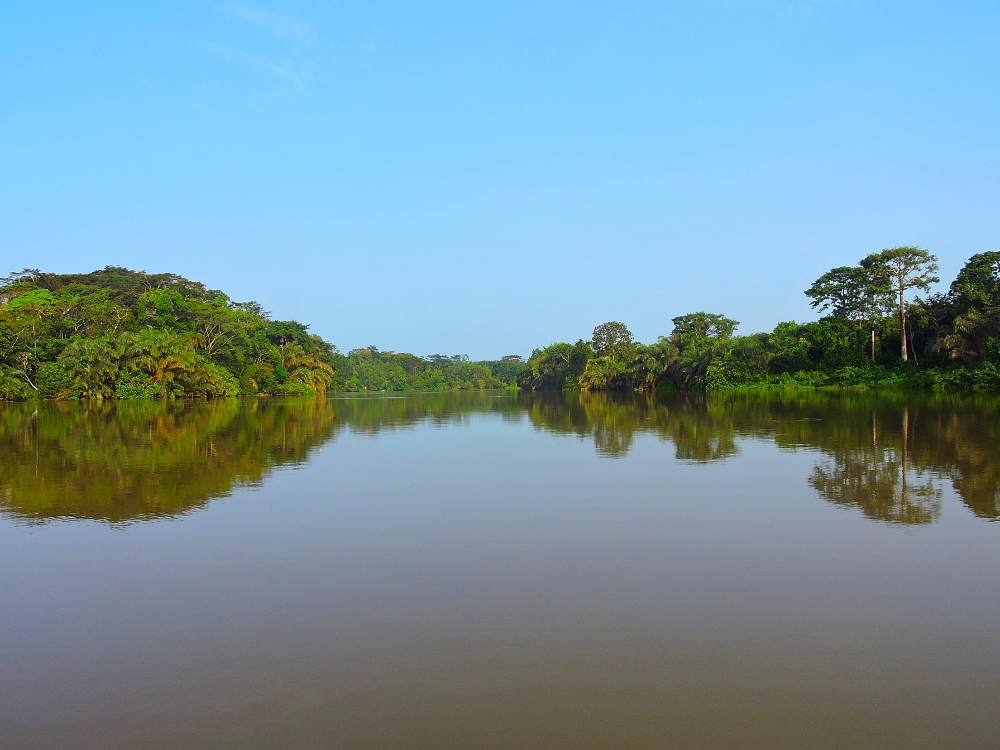
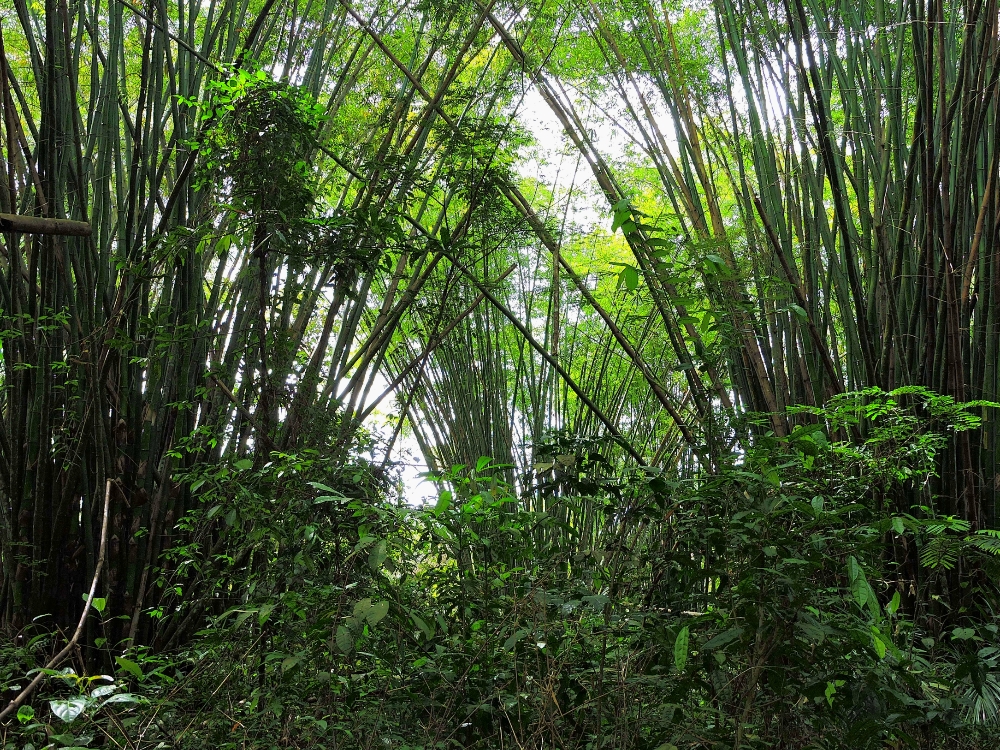
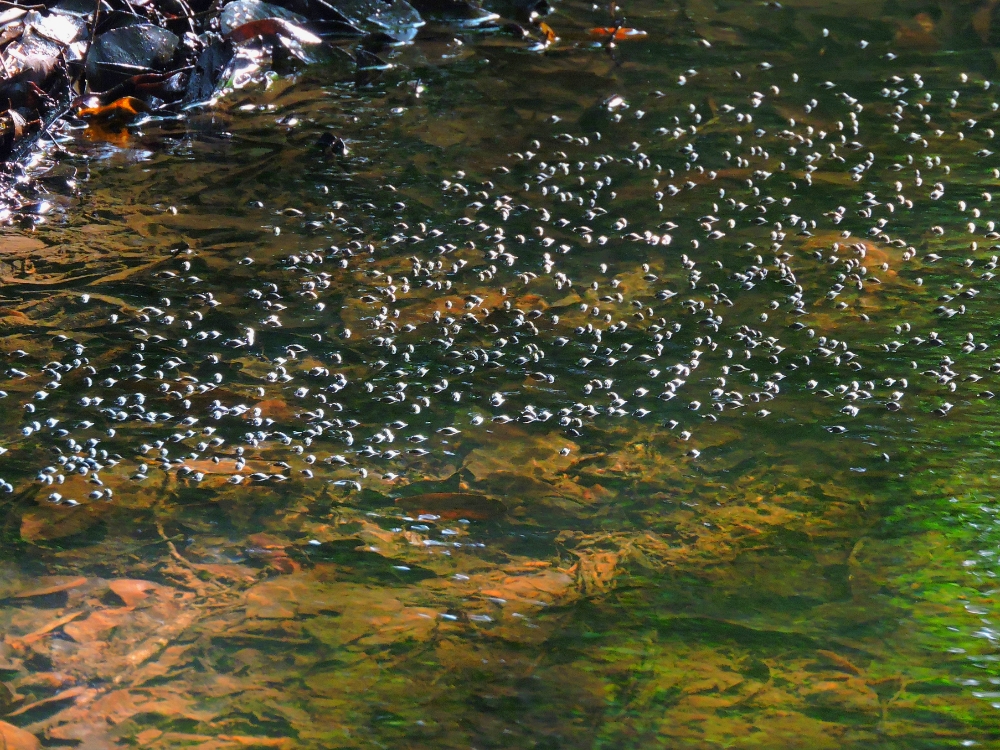
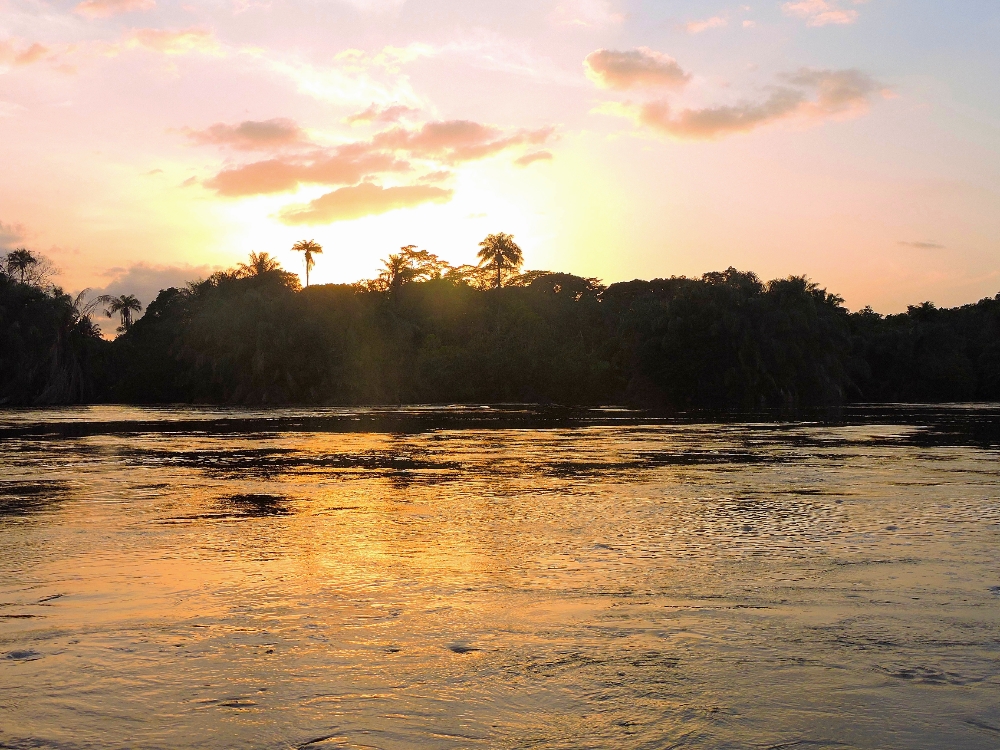
My next destination was the nearby regional capital, Kenema, which would be my base for the most important birding stop of this section. It is only fifty kilometers to the north of Tiwai, but the three most direct routes there are, as of now, entirely on dirt roads. The folks at Tiwai recommend the one that looked like the smallest on the map, but which is also the shortest, saying that it is still dirt but had been upgraded.
I am usually suspicious of statements like that, but in this case the surface was indeed reasonable, though it still seemed to take me a long time. That day turned out to be a Saturday, which meant that I couldn’t work out my birding plans until Monday afternoon, so I had a slightly longer stay there than necessary, but I did appreciate the rest, and that the place I was staying had the only really good restaurant I have patronized while in the country. Another interesting aspect of Kenema is the many shops around the town center selling diamonds and diamond-related equipment. In the past, however, that was not necessarily a good thing. That was because this part of Africa had the dubious honor of creating the horrible terms Conflict Diamonds and Blood Diamonds. Those labels refer to the cases where money from the sale of diamonds mined in the area, and sold to westerners for their engagement rings, was used to fund weapons purchases and operations of various combatant groups during the earlier civil war. Thankfully, that industry seems to be much better regulated these days.
After that stop the only remaining cycling was a return to the area north of Freetown for my departure flight, but the route choices to get there were not particularly simple. Sierra Leon’s paved roads radiate away from Freetown, towards the regional capitals, like fingers on a hand. To travel between any of the main roads would require a certain distance over dirt surfaces. I would have preferred to travel north from Kenema to connect with the next main highway, which would have made my route a true loop. However, that connecting dirt road seemed slightly too long for me to be confident in completing it in one day, especially since it gained a couple of hundred meters of altitude. Instead, I retraced my route in reverse for two days, then utilized a shorter connecting road that eventually led me to the city of Makeni. I was there for longer than I normally would have stayed in any one place because the next flight I needed to use only operates conveniently on Fridays, and I could not make it back to the airport in time for the next departure. That gave me an opportunity for an additional birding day in the more savanna-like environment north of the town, which holds some nice species, and also to submit my next covid test sample at the local hospital.
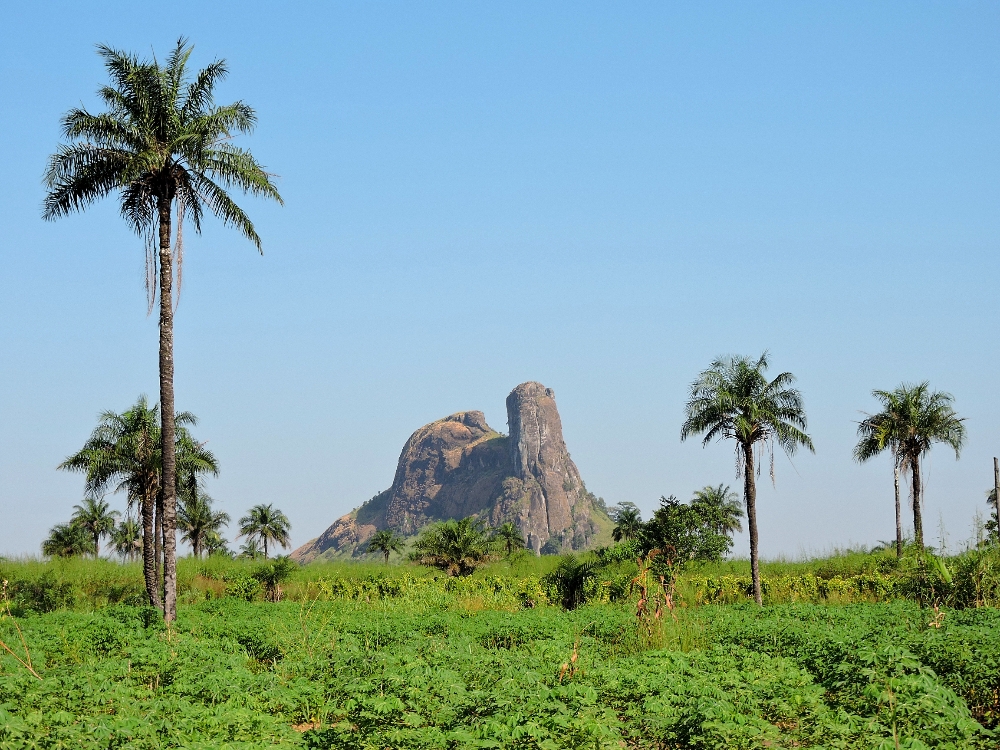
Even though I have been feeling a little tired during the last couple of months, I quite enjoyed my tour through the country of Sierra Leone. Just under one thousand kilometers of cycling, one hundred eighty of which were on dirt, in a country that is a little smaller than South Carolina gave me a good introduction to this part of the World. What I probably appreciated the most was the fact that, like most countries in this category, all of the people one meets on a tour like this one are exceedingly pleasant, friendly, and polite. This presents a stark contrast, one that I have also noticed during some of my previous tours. How could such an amiable people allow themselves to descend into violent conflict, one that became so brutal and terrifying? The answer must lie with all of us as a species, and our inherent flaws. These must not be allowed to take over our World in general, which surely will present us with many daunting challenges in the uncertain decades ahead. When I met the kids shown below they were much too young to have known war and a world full of violence. It will be difficult to ensure that through the rest of their lives they never will, but the type of systems that will lead to that result are things we need to work towards with increased urgency.
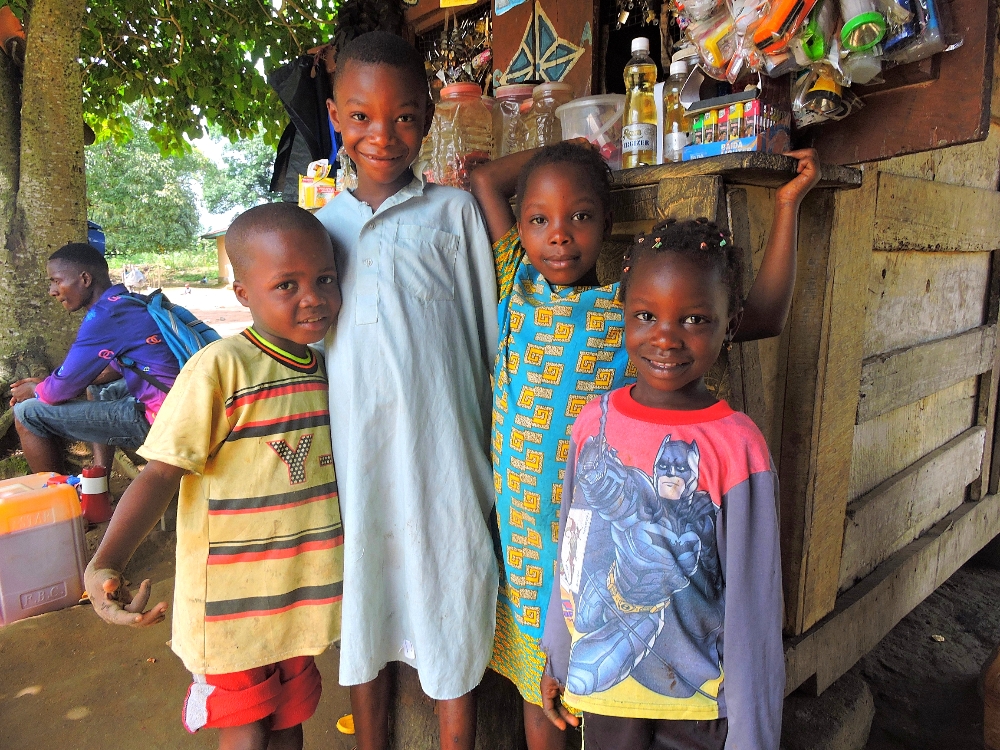
In two days, I should be transferring, unfortunately by air once again, to the next destination of the Tour, and I am decidedly anticipating my visit to that particular location. As far as I can tell, all of the policies, rules, and schedules are in place for this step to go smoothly. However, as we all know by now, this year seemingly certain plans can unravel at a moments notice. I have already dealt with situations like that more than once. Not this time, please…